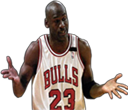Isniin, Janaayo, 11, 2021 (HOL)- Waxaa maalmahan magaalada Jigjiga ee DDS laga dareemayay sare u kac qiimaha maciishada daruuriga ah, taas oo dadka degaanku aad uga walaaceen.
Haddaba mar aanu maanta dhex marnay suuqa magaalada Jigjiga ayaa waxaanu u kuurgalnay xaaladda suuqa iyo waliba qiimaha ay meheradaha qaarkood ku iibinayaan waxyaabaha nolosha aasaasiga u ah.
Bariiska oo kale 25kg wuxuu maanta marayay 980 Birr, Baastada Kartoonkii wuxuu marayay qiimihiisu 420 Birr. Makaroonaha 25kg 850 Birr, Daqiiqda 25kg 720 Birr, Sonkorta 25kg 840 Birr, Caanaha budada ah ee daasada ku yimaadda noocyadooda kala duwan waxay u dhaxeeyeen qiimahoodu 1050 ilaa 580 Birr, Saliidda 5Ltr nooca looyaqaano Vera waxay maanta maraysay qiimaheedu 420 Birr.
Iyadoo meheradaha raashinka iibiyaa ay ku kala duwanaayeen qiimayawga raashinka, haddana waxay kasinaayeen sare u kaca guud ahaan maciishada daruuriga ah.
Dhinaca kale waxaa isna sare u kac laga dareemayay dhanka kirada guryaha ee magaalada Jigjiga oo dadka kirada deggan aad uga cabanayaan.
Guud ahaan sare u kaca aan cagaha ku taagnayn ee maciishada ayay ganacsatada raashinka keenaa sabab uga dhigayaan dhanka dollarka oo sarrifkiisu uusan fadhin, oo maalinba ay wax ku darsamayaan.
Iyadoo dadka si guud ay arrintan maciishada u saamaynayso haddana waxay si gaar ah u taabanaysaa dadka danyarta ah iyo waliba kuwa mushahar bille ah, kuwaas oo waxay bisha soo qaataan iyo waxay kusoo adeeganayaan uu aad u kala fog yahay, waxayna dadka qaarkii markaad hoos ula sheekaysato kuu sheegayan in si kastoo maciishadu kor u kaco mushaharkii bisha uu halkiisii un taagan yahay.
Abdilahi Jawhar
Haddaba mar aanu maanta dhex marnay suuqa magaalada Jigjiga ayaa waxaanu u kuurgalnay xaaladda suuqa iyo waliba qiimaha ay meheradaha qaarkood ku iibinayaan waxyaabaha nolosha aasaasiga u ah.
Bariiska oo kale 25kg wuxuu maanta marayay 980 Birr, Baastada Kartoonkii wuxuu marayay qiimihiisu 420 Birr. Makaroonaha 25kg 850 Birr, Daqiiqda 25kg 720 Birr, Sonkorta 25kg 840 Birr, Caanaha budada ah ee daasada ku yimaadda noocyadooda kala duwan waxay u dhaxeeyeen qiimahoodu 1050 ilaa 580 Birr, Saliidda 5Ltr nooca looyaqaano Vera waxay maanta maraysay qiimaheedu 420 Birr.
Iyadoo meheradaha raashinka iibiyaa ay ku kala duwanaayeen qiimayawga raashinka, haddana waxay kasinaayeen sare u kaca guud ahaan maciishada daruuriga ah.
Dhinaca kale waxaa isna sare u kac laga dareemayay dhanka kirada guryaha ee magaalada Jigjiga oo dadka kirada deggan aad uga cabanayaan.
Guud ahaan sare u kaca aan cagaha ku taagnayn ee maciishada ayay ganacsatada raashinka keenaa sabab uga dhigayaan dhanka dollarka oo sarrifkiisu uusan fadhin, oo maalinba ay wax ku darsamayaan.
Iyadoo dadka si guud ay arrintan maciishada u saamaynayso haddana waxay si gaar ah u taabanaysaa dadka danyarta ah iyo waliba kuwa mushahar bille ah, kuwaas oo waxay bisha soo qaataan iyo waxay kusoo adeeganayaan uu aad u kala fog yahay, waxayna dadka qaarkii markaad hoos ula sheekaysato kuu sheegayan in si kastoo maciishadu kor u kaco mushaharkii bisha uu halkiisii un taagan yahay.
Abdilahi Jawhar

